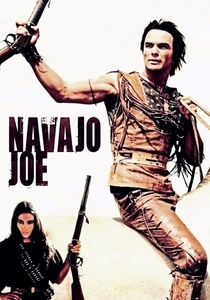If you're a fan of the gritty, action-packed Western 'Mark of the Gun' (1969), you'll love this curated list of 10 similar movies and shows. From classic shootouts to intense revenge plots, these recommendations capture the same raw energy and suspense that made 'Mark of the Gun' a standout. Whether you're revisiting the genre or discovering it for the first time, this guide will point you to your next thrilling watch.

A Fistful of Dollars (1964)
Description: A gritty, violent story of a lone gunslinger playing both sides of a feud, this film established many of the tropes that would define spaghetti westerns. The protagonist's cool demeanor and strategic mind are central to the plot.
Fact: This film was an unofficial remake of Akira Kurosawa's 'Yojimbo.' It was the first spaghetti western to achieve major international success.
 Watch Now
Watch Now 
For a Few Dollars More (1965)
Description: A tale of bounty hunters and revenge, this film showcases the rugged individualism and moral gray areas typical of the genre. The dynamic between the two leads and the climactic showdown are standout elements.
Fact: This was the second film in the 'Dollars Trilogy' and helped solidify the spaghetti western as a popular genre. The musical pocket watch motif is a memorable part of the score.
 Watch Now
Watch Now 
The Good, the Bad and the Ugly (1966)
Description: A classic spaghetti western with a focus on morally ambiguous characters, intense standoffs, and a gritty portrayal of the Old West. The film's visual style and use of silence to build tension are hallmarks of the genre.
Fact: The film's iconic score by Ennio Morricone is one of the most recognizable in cinema history. It was the highest-grossing spaghetti western of all time upon its release.
 Watch Now
Watch Now 
Django (1966)
Description: A dark and violent tale of revenge, this film features a mysterious protagonist dragging a coffin through a town ruled by outlaws. The bleak tone and brutal action sequences are key features.
Fact: The film spawned numerous unofficial sequels and inspired Quentin Tarantino's 'Django Unchained.' The protagonist's coffin drag is one of the most iconic images in the genre.
 Watch Now
Watch Now 
Navajo Joe (1966)
Description: A revenge story featuring a Native American protagonist, this film stands out for its unique perspective and action-packed sequences. The protagonist's skill and determination drive the narrative forward.
Fact: The film's score was composed by Ennio Morricone under a pseudonym. It was one of the few spaghetti westerns to feature a Native American as the central hero.
 Watch Now
Watch Now 
Day of Anger (1967)
Description: A coming-of-age story set in the Old West, this film explores themes of mentorship, revenge, and moral ambiguity. The protagonist's transformation from outcast to gunslinger is central to the narrative.
Fact: The film features one of the most detailed and realistic depictions of quick-draw duels in the genre. The title refers to the protagonist's journey through a single day of violence.
 Watch Now
Watch Now 
The Great Silence (1968)
Description: Set in a snow-covered landscape, this film subverts many western tropes with its bleak ending and morally complex characters. The silent protagonist and oppressive atmosphere create a unique take on the genre.
Fact: The film was shot in the Italian Alps, giving it a distinctive snowy setting rare for westerns. It was heavily censored in some countries due to its violent content.
 Watch Now
Watch Now 
Once Upon a Time in the West (1968)
Description: This epic western features a slow-burning narrative, complex characters, and a strong emphasis on visual storytelling. The film's use of wide shots and atmospheric tension creates a sense of grandeur and inevitability.
Fact: The film was initially a commercial failure but has since been reevaluated as one of the greatest westerns ever made. The opening sequence is famous for its extended silence and tension.
 Watch Now
Watch Now 
Death Rides a Horse (1967)
Description: A revenge-driven plot with a young protagonist seeking justice for his family's murder, this film combines intense action with a psychological exploration of vengeance. The use of flashbacks to reveal the past is a notable technique.
Fact: The film's score was composed by Ennio Morricone, adding to its atmospheric tension. The title refers to the relentless pursuit of revenge by the protagonist.
 Watch Now
Watch Now 
Sabata (1969)
Description: A stylish and action-packed western with a focus on a mysterious gunslinger and his elaborate schemes. The film's blend of humor, action, and clever plot twists makes it a standout.
Fact: The character of Sabata was so popular that it spawned two sequels. The film features inventive weaponry and gadgets, adding a unique flair to the genre.
 Watch Now
Watch Now 








